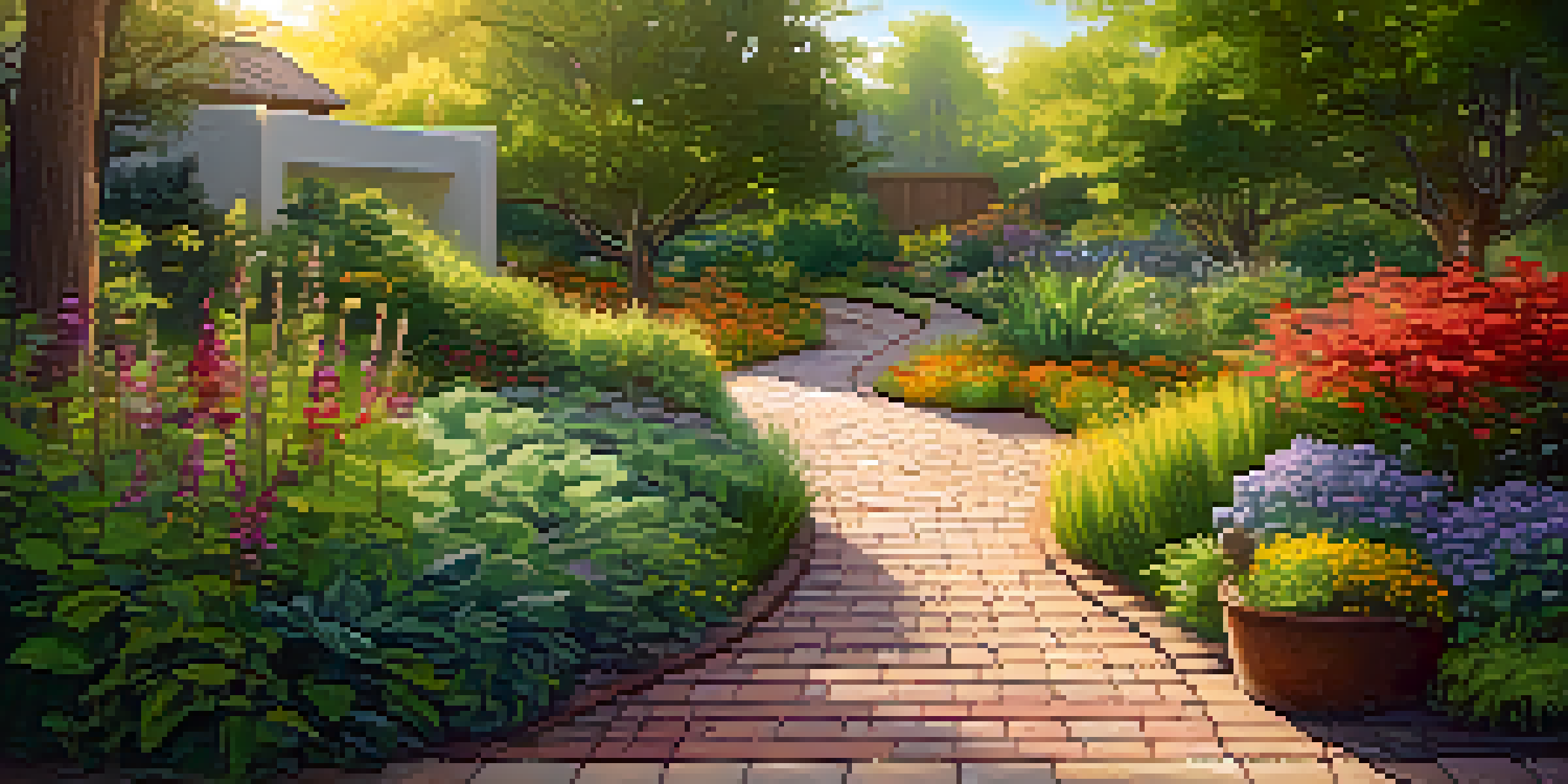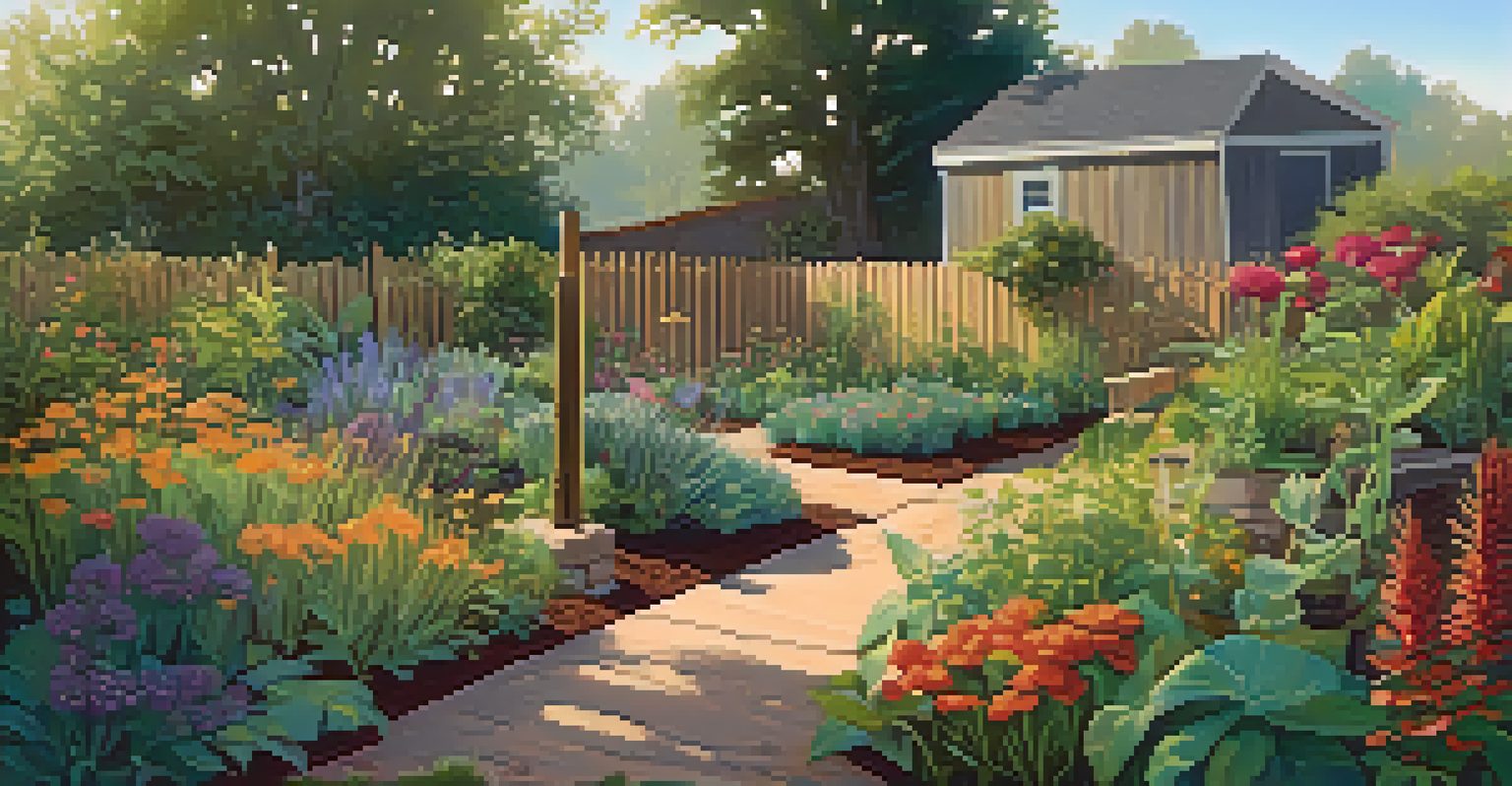Eco-Friendly Landscaping Materials for Sustainable Design

Understanding Eco-Friendly Landscaping Materials
Eco-friendly landscaping materials are those that have minimal impact on the environment. These materials are sourced sustainably, ensuring that they do not deplete natural resources or harm ecosystems. By choosing eco-friendly options, you contribute to a healthier planet while enhancing the beauty of your outdoor space.
The greatest threat to our planet is the belief that someone else will save it.
The importance of these materials goes beyond aesthetics; they play a pivotal role in sustainability. For example, using recycled materials can significantly reduce waste in landfills, while native plants can help maintain local biodiversity. When you opt for eco-friendly landscaping, you're making a conscious choice to support the environment.
Moreover, eco-friendly materials often come with added benefits, such as lower maintenance costs and improved durability. For instance, permeable paving allows rainwater to seep through, reducing runoff and promoting groundwater recharge. This not only supports your landscape but also mitigates the risk of flooding in urban areas.
Recycled Materials: A Sustainable Choice
Recycled materials are a fantastic option for eco-friendly landscaping. They can come from various sources, such as reclaimed wood, recycled glass, or even old tires. Incorporating these materials not only reduces waste but also adds unique character to your landscape design.

For example, using reclaimed wood for decking or fencing can provide a rustic charm while minimizing the need for new timber. Similarly, recycled glass can be used as decorative gravel or mulch, adding vibrant colors to your garden. This creative reuse of materials not only looks great but also tells a story of sustainability.
Eco-Friendly Materials Enhance Nature
Choosing eco-friendly landscaping materials not only beautifies your outdoor space but also supports environmental sustainability.
Another benefit of recycled materials is that they often require less energy to produce than new materials. By choosing these options, you're not just enhancing your landscape; you're also reducing your carbon footprint. It's a win-win situation for both you and the environment.
Native Plants for a Sustainable Landscape
Native plants are a cornerstone of eco-friendly landscaping. They are adapted to the local climate and soil conditions, making them easier to grow and maintain. By choosing native species, you can create a vibrant ecosystem that supports local wildlife, including pollinators like bees and butterflies.
We won’t have a society if we destroy the environment.
Planting native species reduces the need for chemical fertilizers and pesticides, which can be harmful to the environment. These plants are more resilient to pests and diseases, meaning they thrive without the added chemicals. This not only benefits your garden but also contributes to a healthier environment overall.
Additionally, native plants typically require less water than non-native varieties, which can help conserve precious resources. In areas prone to drought, this is especially crucial. By incorporating native plants into your landscape, you're playing an active role in promoting sustainability and environmental stewardship.
Sustainable Hardscaping Options
Hardscaping refers to the non-plant elements of landscaping, such as paths, patios, and walls. Choosing sustainable hardscaping materials can significantly enhance the overall eco-friendliness of your landscape. Options like permeable pavers, recycled concrete, and natural stone can create beautiful and functional outdoor spaces.
Permeable pavers, for instance, allow rainwater to filter through, reducing runoff and promoting groundwater recharge. This can be particularly beneficial in urban areas where stormwater management is a concern. By incorporating these materials, you not only create a stunning patio but also contribute to local water conservation efforts.
Native Plants Promote Biodiversity
Incorporating native plants into your landscape helps maintain local ecosystems and reduces the need for harmful chemicals.
Natural stone is another excellent choice, as it is durable and requires minimal processing. This means less energy consumption and a lower carbon footprint. By selecting sustainable hardscaping options, you're ensuring that your outdoor space is both beautiful and environmentally responsible.
Composting: A Soil Enrichment Strategy
Composting is an effective way to enrich your soil while reducing waste. By turning kitchen scraps and yard waste into nutrient-rich compost, you can improve soil structure and fertility. This natural fertilizer supports healthy plant growth and reduces the need for chemical fertilizers.
To start composting, all you need is a designated bin or pile where you can collect organic materials. Items like fruit and vegetable scraps, grass clippings, and leaves work wonders. Over time, these materials break down into compost, which can be spread throughout your garden to enhance soil health.
Incorporating compost into your landscaping not only supports plant growth but also promotes sustainability. It minimizes waste by recycling organic matter and reduces your reliance on synthetic fertilizers. Embracing composting is a simple yet impactful step toward eco-friendly landscaping.
Water-Saving Irrigation Techniques
Water conservation is a vital aspect of sustainable landscaping, and implementing efficient irrigation techniques can make a significant difference. Drip irrigation systems, for example, deliver water directly to the plant roots, minimizing waste and evaporation. This method ensures that your plants receive the hydration they need without over-watering.
Rainwater harvesting is another effective strategy. By collecting rainwater from your roof and directing it to storage barrels, you can use this natural resource to water your garden. This not only conserves municipal water supplies but also reduces your water bill.
Sustainable Practices for Longevity
Adopting sustainable maintenance and irrigation techniques ensures your landscape remains healthy while conserving resources.
Additionally, using mulch around plants can help retain moisture in the soil and reduce the frequency of watering. By adopting these water-saving techniques, you're not only protecting the environment but also creating a thriving landscape that thrives with minimal resources.
Eco-Friendly Maintenance Practices
Maintaining an eco-friendly landscape goes beyond the initial design; it involves sustainable practices that keep your outdoor space healthy. Regular maintenance tasks, such as mowing and trimming, should be done responsibly to reduce environmental impact. For instance, using electric or manual tools instead of gas-powered equipment can cut down on emissions.
Organic lawn care is another important aspect. Choosing natural fertilizers and pest control methods helps protect beneficial insects and promotes a healthier ecosystem. For example, introducing beneficial nematodes can naturally control pest populations without harming the environment.

Mulching grass clippings and leaves back into the lawn can also enrich the soil and reduce the need for synthetic fertilizers. By adopting these eco-friendly maintenance practices, you're ensuring that your landscape remains vibrant and sustainable for years to come.